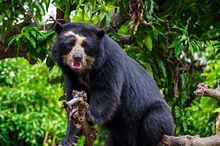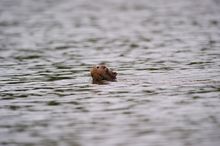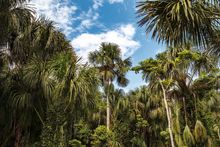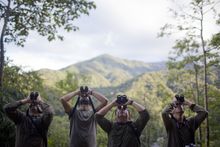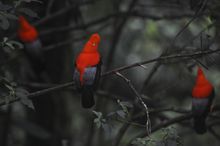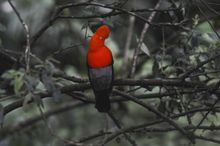 19 Nov 2025
19 Nov 2025
Tags: Peru, Nature, Wildlife, Lonely Planet (publication), wildlife conservation, voluntourism

November 2025 - As Paddington Bear takes to the West End stage in London this month with his eponymous musical, his spectacled bear friends, along with a plethora of other wildlife, are waiting to be discovered by adventurers in Peru’s national parks and reserves. Recently recognised as a top destination for the coming year in Lonely Planet’s Best in Travel 2026, the travel expert also includes the Wired Amazon programme run by Rainforest Expeditions as a top experience for eco-conscious travellers.
Peru contains 15 national parks and 18 national reserves. The country is a global biodiversity hotspot with 10% of all global species calling the country home. It ranks in the top spots for fish, bird, amphibian, and mammal diversity. According to the Thornthwaite Climate Classifications, Peru is host to 38 different climate types, making visiting a great way to experience many environments all in one place.
Paddington’s pals
The spectacled, or Andean bear, is the only bear species in South America and is found almost entirely in the Andes mountains across cloud forests, high-altitude grasslands (paramo), dry forests and scrub deserts. Their nickname comes from the endearing white rings around their eyes that make them look as though they are wearing glasses. Known as ukuku in Quechua, they are extremely significant in the Andean and Amazonian cosmovision. Peru is one of the key habitats for this species, especially in the Andean cloud forests, and there are a number of protected areas like the Manu Reserved Zone and the Chaparrí Reserve which have become some of the best places for visitors to see these furry friends.
While exact numbers are difficult to determine due to the elusive nature of the species and the vast terrain they cover, Peru is believed to host one of the largest national populations of spectacled bears within their range. The Chaparrí Reserve, a community-owned and managed reserve, has one of the densest populations in the country and a centre for the rehabilitation of spectacled bears. The best time to visit is between September to December, avoiding both the crowds and the rainy season.
The bears in Manu National Park, a UNESCO listed Biosphere Reserve and World Heritage Site, occupy a vast ecosystem where they can feed on bromeliads (a plant family that includes pineapple) and walk amongst other animals such as jaguars, giant otters, and red and green macaws. To maximise their chances of spotting a spectacled bear, visitors should aim for the dry season, running from May to October, with less rain and greater amounts of wildlife visibility.
The spectacled bears also found in the Equatorial Dry Forest (Piura, Tumbes, Lambayeque and north of La Libertad), Hierba Buena – Allpayacu (Amazonas) and the Río Abiseo National Park (San Martín).
Citizen conservation – voluntourism
There are several opportunities for travellers to support conservation efforts of the bears and local communities. Ursine enthusiasts can volunteer with the Spectacled Bear Conservation (SBC) organisation in the Chaparrí Reserve to go on expeditions to monitor camera traps in remote habitats, collect evidence of bear activity, contribute to local education, and assist with building structures that benefit the local community. The SBC also work with local women on the Felti programme, who earn a fair and competitive wage to produce small, hand-crafted animals made from locally sourced wool.
Those looking for a jungle expedition can volunteer at the Chontachaka Ecological Reserve in Manu, one of the biggest tropical reserves in the world, and uniquely home to three different ecosystems: the Puna - a high-altitude tundra, the beautiful and mysterious cloud forest, and the lowland rainforest. Each is the habitat of unique animals such as the giant black caiman, jaguars, or the enigmatic Andean Cock-of-the-Rock. Volunteers here will monitor flora and fauna, including spectacled bears, helping to create an inventory of the biodiversity in Manu National Park.
The Wired Amazon programme run by Rainforest Expeditions, where citizen scientists are paired with biologists to carry out important conservation work such as placing camera traps to record jaguar migration paths or light traps in the dark shade of the forest, which has resulted in the discovery of a number of new species, is highlighted as a top experiences for 2026 in Lonely Planet’s Best in Travel.
For further destination information and to plan your trip, visit www.peru.travel
Images available here
-ENDS-
For more press information, please contact Barry Johnston barry@goshpr.co.uk, Naomi Man naomi@goshpr.co.uk or promperu@goshpr.co.uk
